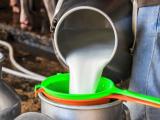Recreational swimming pools play host to a wide range of disease-causing microorganisms, warns the Centers for Disease Control and Prevent (CDC) in the latest issue of Morbidity and Mortality Weekly Report (MMWR).
Today's report is based on data from the last 15 years said that hotel pools and hot tubs are to blame for one third of waterborne disease outbreaks.
The parasite Cryptosporidium and the bacteria Pseudomonas and Legionella cause most outbreaks that begin in swimming venues in the United States. Though chlorine can kill Cryptosporidium, both Pseudomonas and Legionella can survive disinfectants in slimy areas (called biofilm) of hot tubs, pools, and water playgrounds, the CDC said.
From 2000 to 2014, public health officials from 46 states and Puerto Rico recorded 27,219 illnesses associated with 493 outbreaks (two or more cases) that originated in treated recreational water. Included in those illnesses were eight deaths.
Legionella causes severest infections
Among 363 outbreaks with confirmed etiology, the majority (58%) were caused by Cryptosporidium (which causes diarrhea and gastrointestinal illness). Legionella (which causes Legionnaires' disease and Pontiac fever) caused 16% of outbreaks, and Pseudomonas caused 13% of outbreaks. Those bacteria are associated with folliculitis ("hot tub rash") and otitis externa ("swimmers' ear").
Legionella causes the most severe infections, with six of the eight recorded deaths attributed to that bacteria. The bacteria are inhaled by patients and infect the lungs. The CDC said the number of outbreaks caused by Legionella increased 14% per year in each year of the study, likely due to a growing at-risk population (people over the age of 50) and better reporting.
Hotel outbreaks often linked to hot tubs
During the study period, the CDC recorded 157 hotel-related outbreaks with 94 (60%) having a confirmed infectious cause. Of the confirmed outbreaks, 43% were caused by Pseudomonas, 31% by Legionella, and 18% by Cryptosporidium.
Almost half of the hotel outbreaks (41%) were associated with hot tubs and or spas.
"Multiple factors contribute to Legionella and Pseudomonas growth in hot tubs/spas, including inadequate disinfectant concentration; warm (77°F–108°F [25°C–42°C]) water temperatures (which facilitate pathogen amplification and make it difficult to maintain adequate disinfectant concentration); water aeration (which depletes halogens); and the presence of biofilm on wet venue surfaces, scale, and sediment," the authors wrote.
The CDC said swimmers can take serval steps to protect themselves, including avoiding pools if suffering from diarrhea, avoiding swallowing water, and checking a hotel or water park's most recent inspection scores.
See also:
May 18 MMWR report
May 17 CDC press release
















